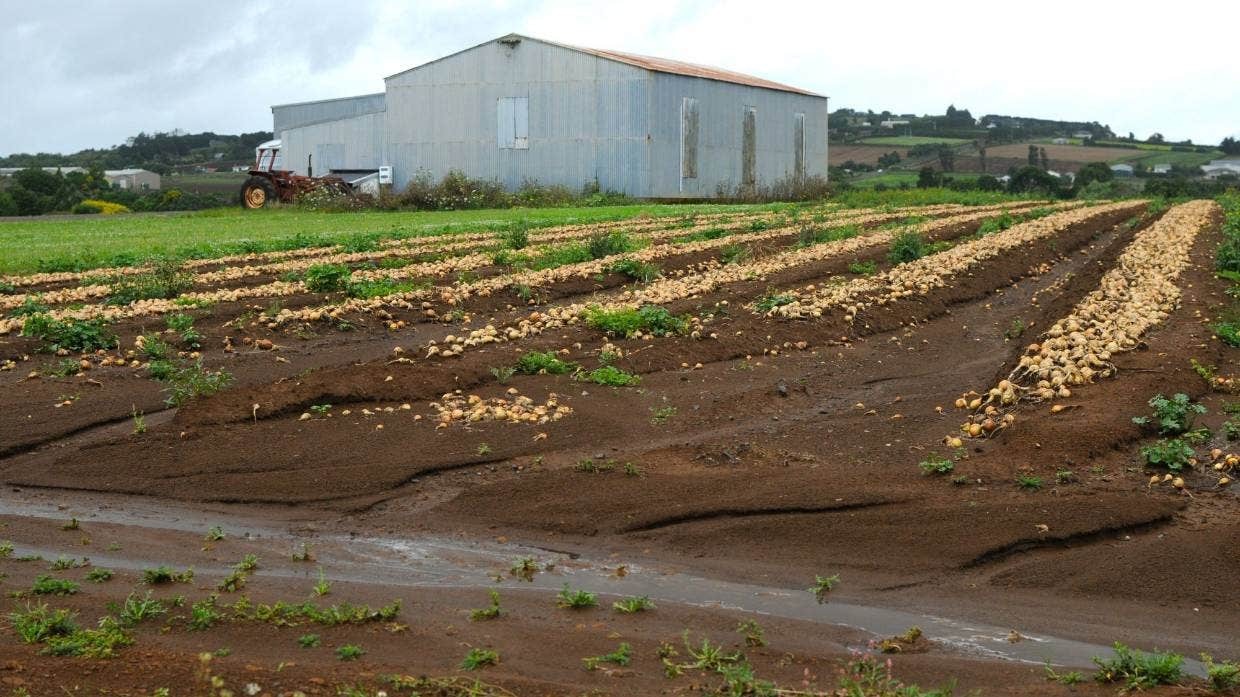Can't see the place you're looking for?
North Island:
South Island:
Thames:
Tairua:

OPINION: We need a national food security plan to stop Kiwis going hungry
Posted by —
eatnewzealand
Published —
08.02.2023
This piece was published on Wednesday 8th February 2022, on Stuff.co.nz.
It is written by Angela Clifford, the CE of Eat New Zealand
OPINION: Images of onions and topsoil floating down streets in Pukekohe and empty egg shelves in supermarkets begs the question: what is our national food security plan?
Are we thinking strategically about where our food is coming from and the way it is being grown to ensure New Zealanders have continued access to basic ingredients and nutritious food to keep us healthy?
A quick look at government initiatives such as the recently released Food & Beverage Transformation Plan or “Fit for A Better World” speaks loudly to how we make money from our primary sector into the future, but does very little to answer pressing issues around food security, food access or food sovereignty.
We can see local councils and community organisations step into the abyss, but there is no nationally co-ordinated approach, and these efforts are mostly reliant on volunteer run and under-resourced communities.
There’s unprecedented demand on food banks, but these were never designed to be long-term solutions for such a large percentage of the population. While they’re much needed “ambulances at the bottom of the cliff”, nothing is being done to build the “fence at the top”.
26% of our domestic vegetable production comes from an area of approximately 40 square kilometres and Pukekohe has been severely affected by recent floods. This is an example of eggs in a single basket – and a time when even the eggs are hard to find.
How do we design our way out of this? How do we do so with a tiriti approach ensuring Māori and other communities have a say in what that looks like?
We all need to feel like we have agency over what ends up on our plates. People want to contribute to feeding their families in a mana-enhancing way, and not be reliant on handouts.
Our farmers are reporting their paddocks being used like supermarkets and consistent poaching of stock is bad enough to beget an industry response. This is an indication of inequity of access and hungry people who’ve taken matters into their own hands.
Late last year Aotearoa Circle launched their Mana Kai initiative which was an attempt at a whole food system approach or a values-based framework for New Zealand. Its design, while not perfect, included conversations with a significant number of groups in the New Zealand food system.
However, there is no pathway to implementation that I can see currently. If we’re to learn anything from the destruction of last week’s event it’s that we no longer have time to waste.
As always the focus is on the future of our primary sector as an export earner and almost none at all on feeding our own people. Political parties need to offer voters genuine food security policies in the upcoming election. Hungry people do not make happy citizens.
A solution could be using the Community Services Card as a “food stamp” dispenser. Every dollar spent is worth more at a local community food hub or market. In other words, $2 spent on local food is worth $3, compared to spending it elsewhere. This would switch on local food systems overnight and hand agency or decision-making power back to those who need the service. There are examples of this internationally, including the SNAP programme in the USA.
This would support distributed, diverse local food providers who are more climate-resilient than centralised monocultural providers, creating more food security. These same hubs could also be procurement points for local hospitals, schools, aged care residencies and government agencies, who now (in my vision) have a local food requirement for a percentage of their food used. Each food hub would reflect its community and the things that make them culturally unique.
These local food hubs would also be depots for rescued food which could be transformed into more shelf-stable products through community kitchens and pay-as-you-can restaurants, mitigating loss caused by adverse weather systems and trade disruptions. It would help NZ reach its goal of halving food waste by 2030.
These regional systems would overcome some of the domestic transport and logistic issues New Zealand food currently has, and could act as collection points when a part of Aotearoa is suffering loss and extra support is needed.
These hubs could also be processing points and include micro abattoirs, mills, pasteurising facilities and fish processing outlets. They would also be where community education and growing advice would be based, and serve a significant social capital purpose after years of isolation and disconnection between people. They would literally grow food communities.
These local food systems could exist alongside our current export sector without impacting upon it, allowing us to have our cake, and eat it too.
Read the full piece on Stuff.co.nz
Image via Stuff.co.nz

